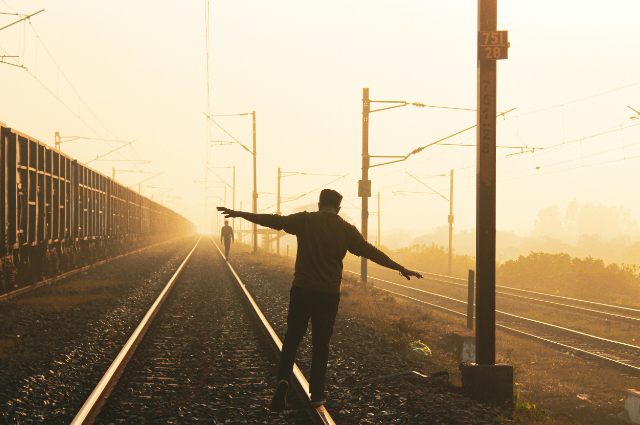
Photo by Sai Koushik on Unsplash
Trains travel both ways, but the Budget seems to be going in One Direction.
Data from an RTI query that was filed by Chandra Shekhar Gaur from Madhya Pradesh disclosed “an average of three consequential train accidents per month over the past five years, with 18 accidents reported in the first five months of 2024-2025 alone”.
“The government's focus on high-profile projects seems to have diverted attention from critical safety concerns,” Chandra Shekhar Gaur said.
When the government allocates these costs for modernised benefits, is it at the cost of money or marginalised infrastructure and civilians?
Indian Railways are swarmed by safety concerns; The Economic Times stated that the 2025 budget will most probably face an increase in funding by 15-20% for modernization as well as certain safety upgrades. There was a deficiency of “sector-specific announcements in the 2024-2025 budgets”.
The need for advancements and modernization often clashes with the deep-rooted inefficiencies and imbalances in the system which remains unaddressed or are overshadowed by the wow-factor of what can be done. Although there is highlighted progress, the tenuous disasters that have been reported plague the system. This increase in budget allocation is viewed as necessary “for accelerating modernization efforts, with a focus on upgrading railway stations, launching modern trains, and addressing track network congestion,”
India’s investments in the year 2024 focused on Vande-Bharat trains as well as the electrification of railway tracks. An investment of Rupees 21,000crore was made to the National High Speed Rail Corporation Ltd (NHSRCL), which was taking care of the bullet train project, and is getting ready to launch sleeper trains under the Vande Bharat initiative “in the upcoming fiscal year.”
Just as much, there is a need for increase in investments in projects that ensure safety, specifically, the Kavach system. The government allocated Rupees 1,112crore in the budget of 2024 for the installation of the Kavach system, but only 1,445km of the 69,000km railway network has been working with the system, and furthermore, it has only been installed on 139 locomotives against a total of 14,800. With the increase in railway accidents and close-calls, it is important to efficiently increase the installations of the Kavach. This system intends to complete installations through 4,500km by the end of 2025.
In the month of July, 2024, the shares of railway stocks had plummeted by 8% on the Bombay Stock Exchange, “following the Union Budget 2024-2025 which lacked sector specific announcements or allocations”. “The disappointment stemmed from the absence of targeted railway infrastructure investments, particularly in upgrading safety, passenger comfort, and modernisation”. And the first half of the year 2024 alone was disheartened by three terrible accidents, the collision of the Kanchanjunga Express (June), and the derailments that took place close to Barabamboo and Goda (July).
The Union Budget in 2025 is expected to implement initiatives for the railway sector which includes additional Vande Bharat and Amrit Bharat trains. The government might augment Amrit Bharat Station Yojana, expanding and modernizing 1,275 railway stations.
Prioritizing modernity of new systems should not warrant inefficiency of the older systems. Leaving it behind has only faltered the old system, allowing it to be more prone to accidents or collisions.
